Ilya Kabakov Holidays #10 1987 Oil, string and paper, foil and cloth collage on masonite in the artist's painted wood frame. 100.3 x 156.2 cm (39 1/2 x 61 1/2 in). Signed, titled in Cyrillic and dated 'I. Kabakov "Holidays" No.10 1987' on the reverse of the stretcher. This work is listed under catalogue raisonné number 119, where it is mistitled “Holidays #5” and incorrectly listed as a work on canvas.
Provenance Kniga Collection, Paris; John L. Stewart Collection, New York; Private Collection Exhibited Paris, Galerie de France, FIAC, 10 October – 18 October 1987; Madrid, Galerie de France, ARCO, 10 – 16 February 1988; Bonn, Bonner Kunstverein, Erik Bulatov – Ilya Kabakov Moskau, 2 May – 5 June 1988; Kunstmuseum Bern, Ich Lebe – Ich Sehe: Künstler der Achtziger Jahre in Moskau, 11 June – 14 August 1988; Basel, Museum für Gegenwartskunst, Ilya Kabakov Ein Meer von Stimmen, 13 August – 12 November 1995; East Hampton, New York, Guild Hall Museum, The Reading Room, 28 June – 27 July 1997; Annandale-on-Hudson, New York, Center for Curatorial Studies, Bard College, Ilya Kabakov 1969–1998, 25 June – 3 September 2000 Literature M. Landert, M. Büchler, ed., Ich Lebe – Ich Sehe: Künstler der Achtziger Jahre in Moskau, exh. cat., Kunstmuseum Bern, 1988; ART Contemporain Sovietique. Sélection d’Oeuvres Provenant de la Collection KNIGA, Paris: Galerie de France, 1988, p. 27 (illustrated); T. Vischer, ed., Ilya Kabakov Ein Meer von Stimmen, exh. cat., Museum für Gegenwartskunst, Basel, 1995, pp. 112–17 (illustrated); Ilya Kabakov the Reading Room, exh. cat., Guild Hall Museum, East Hampton, New York, 1997, p. 17 (illustrated); A. Cruz, ed., Ilya Kabakov 1969–1998, Bard College, Annandale-on-Hudson, 2000, pp. 54–55; Z. Felix, ed., Ilya Kabakov Der Text als Grundlage des Visuellen/The Text as the Basis of Visual Expression, Cologne: Oktagon, 2000, p. 104; Ilya Kabakov in the Collection of John L. Stewart, 2007, p. 83 (illustrated in colour); R. Petzinger, E. Kabakov, ed., Ilya Kabakov Paintings /Gemälde 1. Catalogue Raisonné, Vol. 1, Germany: Kerber Verlag, 2008, p. 204 Catalogue Essay This painting, from Ilya Kabakov’s Holidays series, was created in 1987. In the USSR this was the height of Perestroika, an era that signalled the beginning of the end for the entire socialist system. For Kabakov, the late 1980s was the period when he formed and implemented the concept of the ‘absolute installation’ – creating, in essence, the contemporary Gesamkunstwerk. However, this art form could only be realised in the West, where Kabakov would finally gain access to the vast exhibition spaces of the best galleries and museums. For what Kabakov yearned to achieve could not fit within the confines of a sheet of paper, a portfolio, a painting or an art object. He was more interested in creating a three-dimensional concept, a singular world where he was both leading actor and director; where the actual art was born within the dialogue between the visuals offered and the audience’s reaction to them. Thus, it is no accident that in his best installations from the late 1980s and early 1990s – Holidays being among these – the artist turns to mass graphic production. Such displays had been ubiquitous in the USSR, from museums and exhibitions halls to vast public spaces. Having moved to the West, Kabakov gained the opportunity to utilise this genre freely, with both censorship and space limitations finally eliminated. However, the visual and semantic reality of the Soviet era remained an important component, a springboard for the artist – who had, of course, been trained in this tradition. The Holidays installation consists of twelve oil paintings, ten horizontal and two vertical. They were displayed, sometimes in two rows with the vertical ones leaning against the wall, in a room “where the floor was strewn with garbage, old newspapers, overturned tables and chairs” (I. Kabakov, Texts, Vologda, 2010, p. 135). At the first perfunctory glance these works seem to have been painted 40 or 50 years ago, probably commissioned from an art production plant for some Soviet-era public space. Unlike the 1992 installation Incident in a Museum or Water Music, in this case the supposed artist is a faceless entity, a cog in the great machine of ‘The System’. According to Kabakov, he is “not so much an artist, but a character, a someone”. He is so insignificant that there
Ilya Kabakov Holidays #10 1987 Oil, string and paper, foil and cloth collage on masonite in the artist's painted wood frame. 100.3 x 156.2 cm (39 1/2 x 61 1/2 in). Signed, titled in Cyrillic and dated 'I. Kabakov "Holidays" No.10 1987' on the reverse of the stretcher. This work is listed under catalogue raisonné number 119, where it is mistitled “Holidays #5” and incorrectly listed as a work on canvas.
Provenance Kniga Collection, Paris; John L. Stewart Collection, New York; Private Collection Exhibited Paris, Galerie de France, FIAC, 10 October – 18 October 1987; Madrid, Galerie de France, ARCO, 10 – 16 February 1988; Bonn, Bonner Kunstverein, Erik Bulatov – Ilya Kabakov Moskau, 2 May – 5 June 1988; Kunstmuseum Bern, Ich Lebe – Ich Sehe: Künstler der Achtziger Jahre in Moskau, 11 June – 14 August 1988; Basel, Museum für Gegenwartskunst, Ilya Kabakov Ein Meer von Stimmen, 13 August – 12 November 1995; East Hampton, New York, Guild Hall Museum, The Reading Room, 28 June – 27 July 1997; Annandale-on-Hudson, New York, Center for Curatorial Studies, Bard College, Ilya Kabakov 1969–1998, 25 June – 3 September 2000 Literature M. Landert, M. Büchler, ed., Ich Lebe – Ich Sehe: Künstler der Achtziger Jahre in Moskau, exh. cat., Kunstmuseum Bern, 1988; ART Contemporain Sovietique. Sélection d’Oeuvres Provenant de la Collection KNIGA, Paris: Galerie de France, 1988, p. 27 (illustrated); T. Vischer, ed., Ilya Kabakov Ein Meer von Stimmen, exh. cat., Museum für Gegenwartskunst, Basel, 1995, pp. 112–17 (illustrated); Ilya Kabakov the Reading Room, exh. cat., Guild Hall Museum, East Hampton, New York, 1997, p. 17 (illustrated); A. Cruz, ed., Ilya Kabakov 1969–1998, Bard College, Annandale-on-Hudson, 2000, pp. 54–55; Z. Felix, ed., Ilya Kabakov Der Text als Grundlage des Visuellen/The Text as the Basis of Visual Expression, Cologne: Oktagon, 2000, p. 104; Ilya Kabakov in the Collection of John L. Stewart, 2007, p. 83 (illustrated in colour); R. Petzinger, E. Kabakov, ed., Ilya Kabakov Paintings /Gemälde 1. Catalogue Raisonné, Vol. 1, Germany: Kerber Verlag, 2008, p. 204 Catalogue Essay This painting, from Ilya Kabakov’s Holidays series, was created in 1987. In the USSR this was the height of Perestroika, an era that signalled the beginning of the end for the entire socialist system. For Kabakov, the late 1980s was the period when he formed and implemented the concept of the ‘absolute installation’ – creating, in essence, the contemporary Gesamkunstwerk. However, this art form could only be realised in the West, where Kabakov would finally gain access to the vast exhibition spaces of the best galleries and museums. For what Kabakov yearned to achieve could not fit within the confines of a sheet of paper, a portfolio, a painting or an art object. He was more interested in creating a three-dimensional concept, a singular world where he was both leading actor and director; where the actual art was born within the dialogue between the visuals offered and the audience’s reaction to them. Thus, it is no accident that in his best installations from the late 1980s and early 1990s – Holidays being among these – the artist turns to mass graphic production. Such displays had been ubiquitous in the USSR, from museums and exhibitions halls to vast public spaces. Having moved to the West, Kabakov gained the opportunity to utilise this genre freely, with both censorship and space limitations finally eliminated. However, the visual and semantic reality of the Soviet era remained an important component, a springboard for the artist – who had, of course, been trained in this tradition. The Holidays installation consists of twelve oil paintings, ten horizontal and two vertical. They were displayed, sometimes in two rows with the vertical ones leaning against the wall, in a room “where the floor was strewn with garbage, old newspapers, overturned tables and chairs” (I. Kabakov, Texts, Vologda, 2010, p. 135). At the first perfunctory glance these works seem to have been painted 40 or 50 years ago, probably commissioned from an art production plant for some Soviet-era public space. Unlike the 1992 installation Incident in a Museum or Water Music, in this case the supposed artist is a faceless entity, a cog in the great machine of ‘The System’. According to Kabakov, he is “not so much an artist, but a character, a someone”. He is so insignificant that there
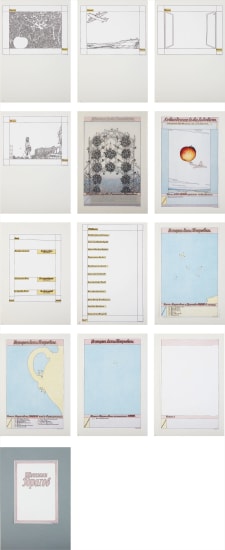



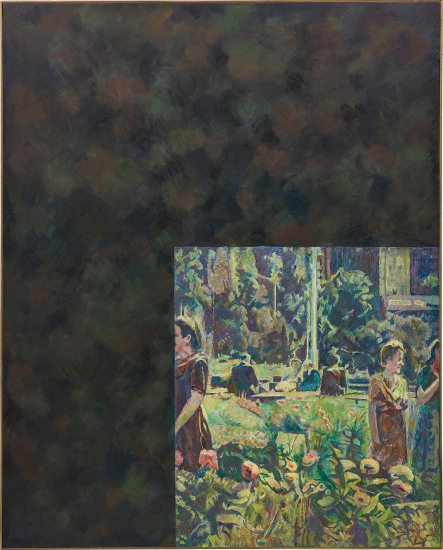

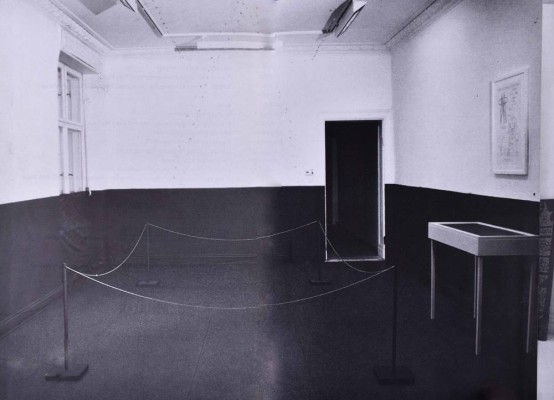
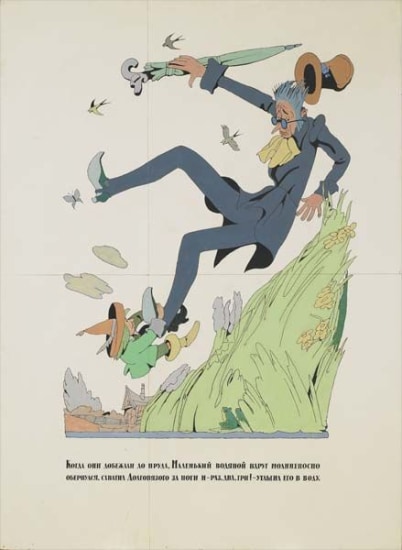

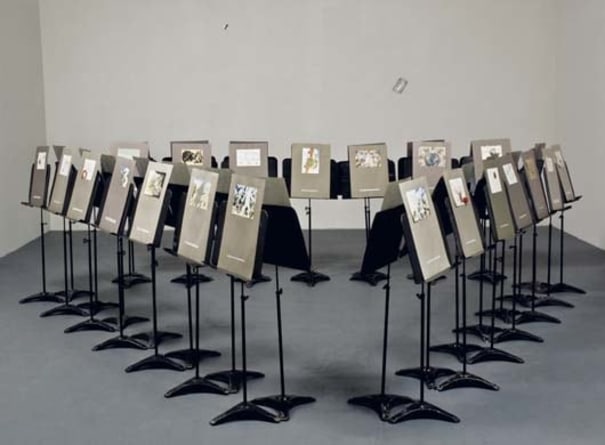
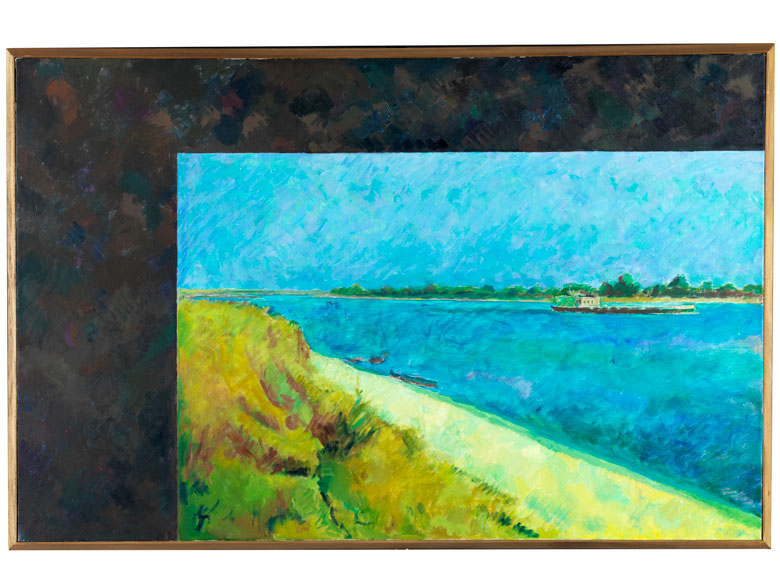
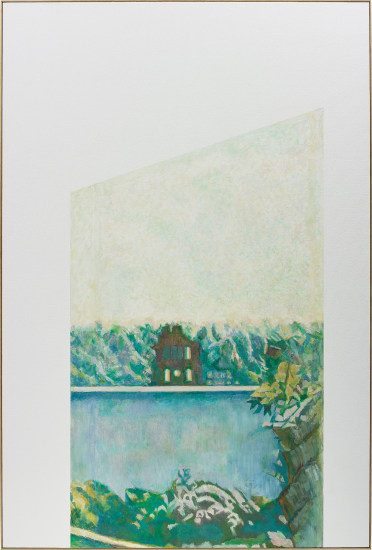


Testen Sie LotSearch und seine Premium-Features 7 Tage - ohne Kosten!
Lassen Sie sich automatisch über neue Objekte in kommenden Auktionen benachrichtigen.
Suchauftrag anlegen